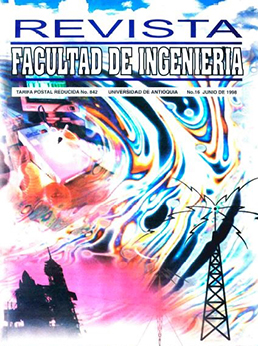OPTIMABDD: herramienta CASE para el diseño de bases de datos distribuidas
DOI:
https://doi.org/10.17533/udea.redin.325767Keywords:
Diseño de Bases De Datos, Herramientas CASE, Bases de datos Distribuidas.Abstract
Se describen las facilidades que ofrece OPTIMABDD, una herramienta CASE construida para diseñar Bases de Datos Distribuidas. El CASE utiliza de una manera complementaria dos metas en la distribución de los datos: Ubicar cada elemento de información en el sitio donde más se use y evaluar el costo de las decisiones que se tomen, para medir, por ejemplo, en que medida se distribuye la carga de trabajo o los tiempos de procesamiento esperados para cada aplicación.Downloads
References
[CERI-84] STEFANO Ceri y GIUSEPPE Pelagatti. Distributed Database: Principies and System. Nueva York, N.Y.: McGraw-Hill (1984).
[CERI-87] S. CERI, B. Percini and G. Wiederhold, "Distributed Database Design Methodologies", Proceedings ofthe IEEE, Vol 75, Nro. 5, pp. 533-546, Mayo 1987. DOI: https://doi.org/10.1109/PROC.1987.13771
[MORE-97] MORENO Francisco J., Osorio G. Fernando, Quintero Juan B. y Duitama M. Freddy. Optimabdd: Herramienta CASE para bases de datos distribuidas. Proyecto de grado Facultad de Ingeniería. U. de Antioquia. 1997.
[ÓZSU-91] M.Tamer Ózsu and Patrick Valduriez. Principies of Distributed Data base Systems. Prentice Hall. 1991.
[ULLM-88] JEFFREY D. Ullman. Principies of Database and Knowledge-Base System. Volúmenes I y II. Computer Science Press. 1988.
Downloads
Published
How to Cite
Issue
Section
License
Revista Facultad de Ingeniería, Universidad de Antioquia is licensed under the Creative Commons Attribution BY-NC-SA 4.0 license. https://creativecommons.org/licenses/by-nc-sa/4.0/deed.en
You are free to:
Share — copy and redistribute the material in any medium or format
Adapt — remix, transform, and build upon the material
Under the following terms:
Attribution — You must give appropriate credit, provide a link to the license, and indicate if changes were made. You may do so in any reasonable manner, but not in any way that suggests the licensor endorses you or your use.
NonCommercial — You may not use the material for commercial purposes.
ShareAlike — If you remix, transform, or build upon the material, you must distribute your contributions under the same license as the original.
The material published in the journal can be distributed, copied and exhibited by third parties if the respective credits are given to the journal. No commercial benefit can be obtained and derivative works must be under the same license terms as the original work.










 Twitter
Twitter